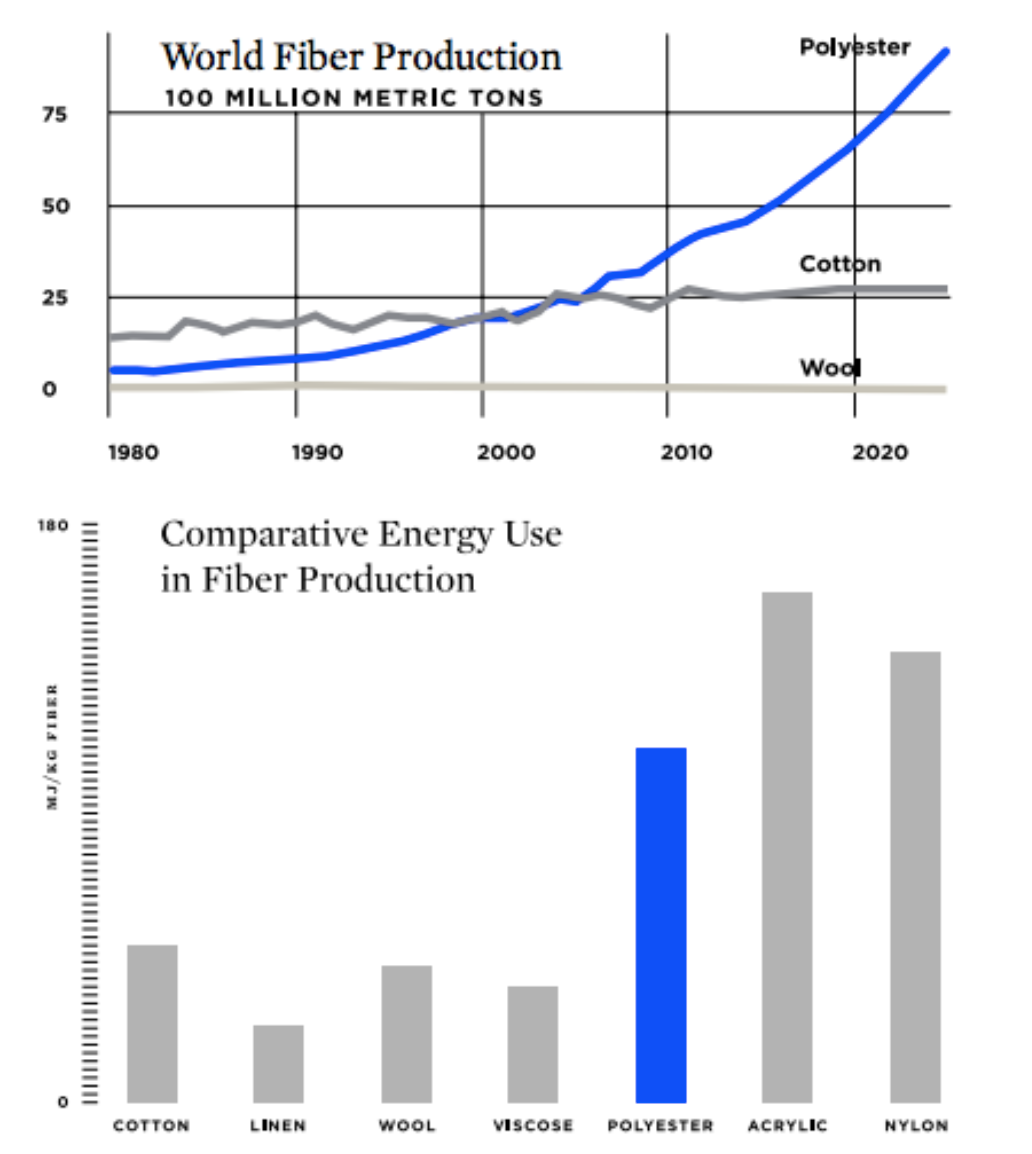Why Incorporating Sustainability Into Your Everyday Life Matters

Photo by Robert Anthony
“You must be the change you want to see in the world.” -Mahatma Gandhi
This article will focus on the ways in which we can harness the positive intentions to invest with impact and channel it into your everyday life. I know this may sounds a little corny, but I believe we can be better impact investors if we’re mindful global citizens too.
Most of us are pretty good at focusing on one thing and doing it very well. It can get more challenging when we have to expand our focus on multiple things over long stretches of time. I’m going to outline a few key areas that each of us can assess and reimagine in our day to day routine.
- The fashion industry is the second largest user of water in the world.
- Fashion is the world’s 2nd most polluting industry! (second only to oil)
- There are over 40 million garment workers, most of whom work without adequate labor laws or fair wages.
- Over 90 million items of clothing end up in landfills (globally) each year[1].
- 150 grams of pesticides and other agricultural chemicals are used to produce the cotton for just one t-shirt.
- The transportation of clothing depends upon a global fleet of trucks, planes and ships. Much of the cotton produced in the U.S. is shipped to garment factories in China where it is manufactured into clothing that is then shipped back to the U.S. (Just think of all the carbon emissions created for that cheap tee shirt).
This was rather depressing for me when I first learned of these facts. It never occurred to me that my clothing could be having such a harmful effect on the planet. After doing some homework, I was able to come up with a list of actionable steps we can all take to help alleviate the negative social/environmental impact of our purchases:
- Buy things you love. The biggest issue we have in terms of sustainability in apparel is that we just produce too much. The average person throws out 70 lbs. of clothing every year and we now consume 400% more than we did even 20 years ago. It doesn’t mean buying nothing, just buy fewer, better things.[2]
- Avoid synthetic materials. They use more toxic dyes to retain color, they take over 200 years to decompose (natural fiber takes only 1), and most significantly, they take more energy to produce. Choose natural fibers, better yet natural fibers that are not made with pesticides. Look at these two graphs (below) and you begin to see the issue. The first one shows a little bit the impact of fast fashion, that’s why polyester has taken off. Also, beyond polyester having an enormous carbon footprint, 85% of the human-made material found on the worlds shorelines are microplastics believed to be from polyester. Fish eat that and then, well, we eat the fish.

- On the ethical front, avoid products that are made in countries that have made shadow factories the norm this includes: Bangladesh, Vietnam and China. The solution in those countries has been to audit, but auditing unfortunately does not help the main issue which is shadow factories. Shadow factories are outsourced facilities where the brand or even the middle agent doesn’t know where the production is taking place[3].
- On the subject of China. China’s power grid is coal-based; when you buy clothing from there you’re also contributing to increased carbon output.
01 | Your health:
- Eat less meat. The World Health Organization (WHO) recently stated that eating meat can cause cancer (especially processed meats). It might take a while to get used to eating less meat (or cutting them out entirely, as I have), but like most things it gets a lot easier with time. Best to work it into your routine slowly (meatless Mondays, etc).
- Go Organic. If possible try to eat certified organic foods. These goodies are sprayed with way fewer chemicals than their non-organic brethren. This is important for two reasons. First, you won’t be putting those chemicals in your body. Second, those chemicals won’t end up in the water we drink or the air we breathe. Worst case; try to only buy non-gmo (genetically modified organisms) goods, as studies have linked gmo produce to cancer and other not so pleasant health risks.
02 | Animal well-being
There are essentially two ways animals are being raised for slaughter. Humanely, and horribly. Unfortunately, most of the meat we eat is factory farmed, where animals are subject to outright torture for most of their short lives. If/when you do eat meat, only buy it from stores/restaurants that purchase from farms that allow the animals to roam freely in the pasture. Many places offer humanely raised products. It’s also good to ask each grocer/restaurant you go to whether their meat is factory farmed or not. The more people ask, the more awareness you’ll raise and increase how likely they are to switching to humanely raised. It might seem like a chore, but when you think about the implications, you’ll see it’s worth the effort. This applies to fish too. Many fishing activities are inhumane and end up hurting other species as well (like dolphins getting caught in tuna nets). Most of us have had pets growing up (cats, dogs, horses, etc). When we think about how loving/adorable they are, it will likely upset you to think of them being eaten. Try to remember that when you order your next meal. All animals deserve love.
* When I have animal protein, I stick with “faceless” fish; scallops, oysters, clams. I know it might sound silly, but I feel much better about eating these little guys because they don’t have a central nervous system and thus a likely unable to feel pain.
03 | Environment
When thinking about food, rarely would it occur to me to think about the impact it was having on the environment. I’ve come to learn that food production has an immense impact on the environment, and that our eating habits can meaningfully help or hurt the health of our climate. The world’s rapidly growing population requires increased food production, which is one of the greatest causes of environmental degradation. For example, mass meat production has been shown to be one of the main contributors to carbon dioxide emissions. Estimates show that approximately 9% of total carbon emissions are the result of various gases from the farm (mostly cow farts!). Also, due to the incredible amount of land that is required in livestock production, many wildlife species struggle with a lack of habitat, and many are even threatened with extinction. Did you know that one pound of meat requires almost 1,800 gallons of water[4]? That is way more than what’s required for veggies and grains. Another way to lessen your impact on the environment is to buy local. A lot of fuel is used in the transportation of food, so if you can buy from local farms it’ll help support the local community and reduce climate change!
- Avoid plastic. Use paper, recycled if possible. Better yet, find products made from bamboo. Its way more sustainable than paper.
- Be mindful of your water usage. Less time in the shower, turning the faucet off when brushing your teeth, buy a water efficient washing machine and flush less. I know that last one sounds gross, but flushing less can save an immense amount of water, since most toilets are old and don’t have water efficient systems. More than 45% of water use in the average American home occurs in the bathroom, with nearly 27% being used by toilets.
- Adopt, don’t buy. When adding a friendly pet to your home, please remember not to buy from a breeder. Female dogs are bred at every opportunity with little to no recovery time between litters. When, after a few years, they are physically depleted to the point that they no longer can reproduce, breeding females are often killed. Every year in America, it’s estimated that 2.11 million puppies are sold that originated from breeders[5], while 3 million are killed in shelters because they are too full and there aren’t enough adoptive homes. Act as a publicist for your local animal shelter to encourage your community to adopt shelter pets.
- Buy used vs new. There’s loads of great stuff that you can buy used. From fashion to art to kitchen supplies, it’s easy to get just about anything pre-owned nowadays. The great thing about buying used is that it costs less, and you’re not adding new waste/excess into the world. You’re also putting $ into the hands of the small businesses. Great sources include eBay, online consignment stores and your local thrift store.
- Use less energy. Ride your bike. Staycation vs vacation. If that doesn’t work, drive versus fly. Carpool. Convert to green power for your home/apartment. Turn your lights off whenever possible.
The common theme here is to be more mindful. Try to think about the things you do on a regular basis, and look for ways to do them more sustainably. It’s that simple. This can be a fun exercise if you approach it the right way. Get five of your friends together and create a competition on who can become more sustainable over the next week, month, etc. Start a larger competition. Start one at work. Either way, get started!
[1] Reve en Vert / [2] CNN / [3] The Guardian / [4] Huffington Post / [5] Do Something
FROM THE EDITOR
At Conscious, we feature powerful stories about global initiatives, innovation, community development, social impact and more. You can read more stories like this and connect with a growing community of global leaders when you join.
Michael Pellman Rowland is a Financial Advisor with Morgan Stanley Global Wealth Management in New York. The information contained in this article is not a solicitation to purchase or sell investments. Any information presented is general in nature and not intended to provide individually tailored investment advice. The views expressed are the author’s and may not represent the views of Morgan Stanley.



